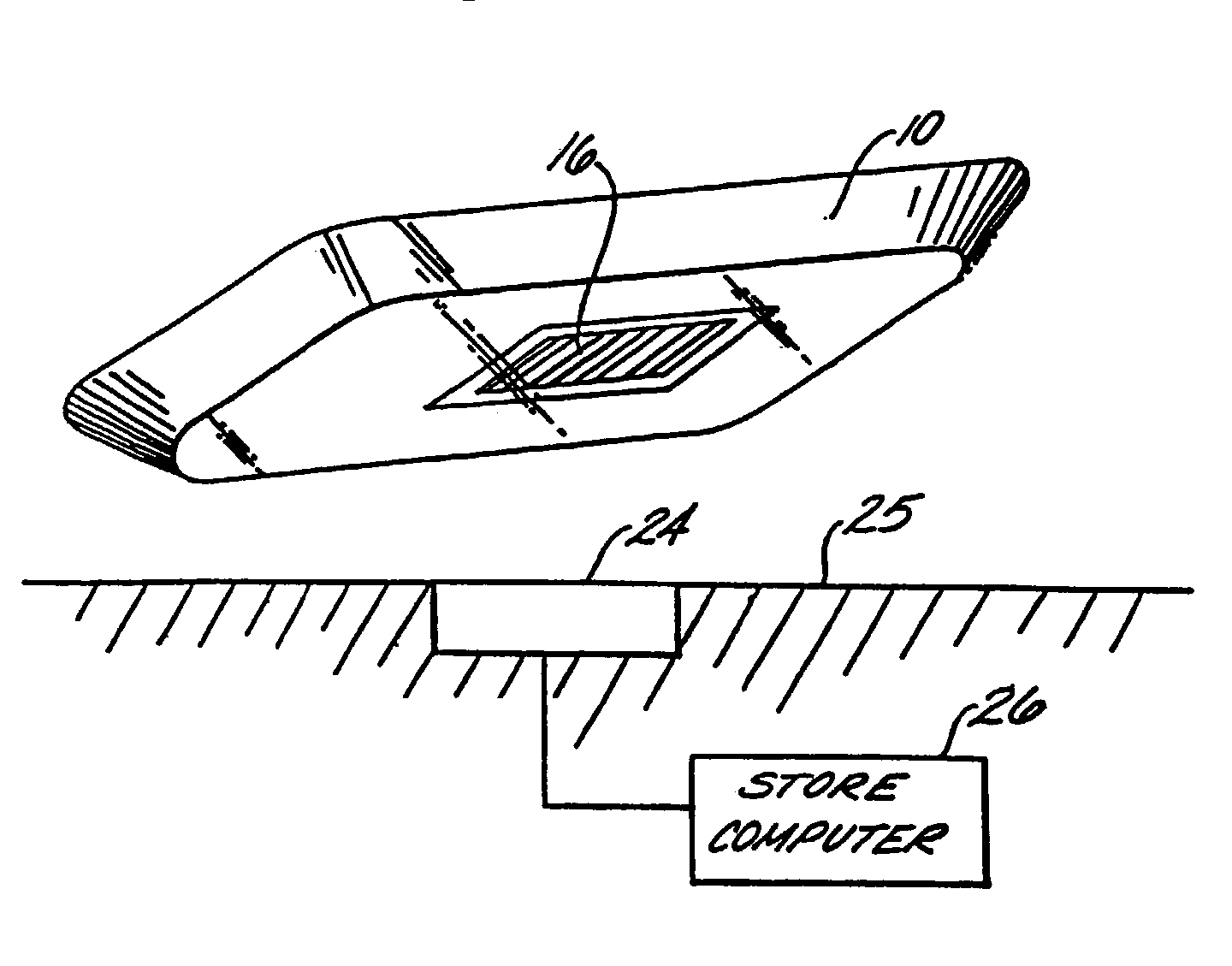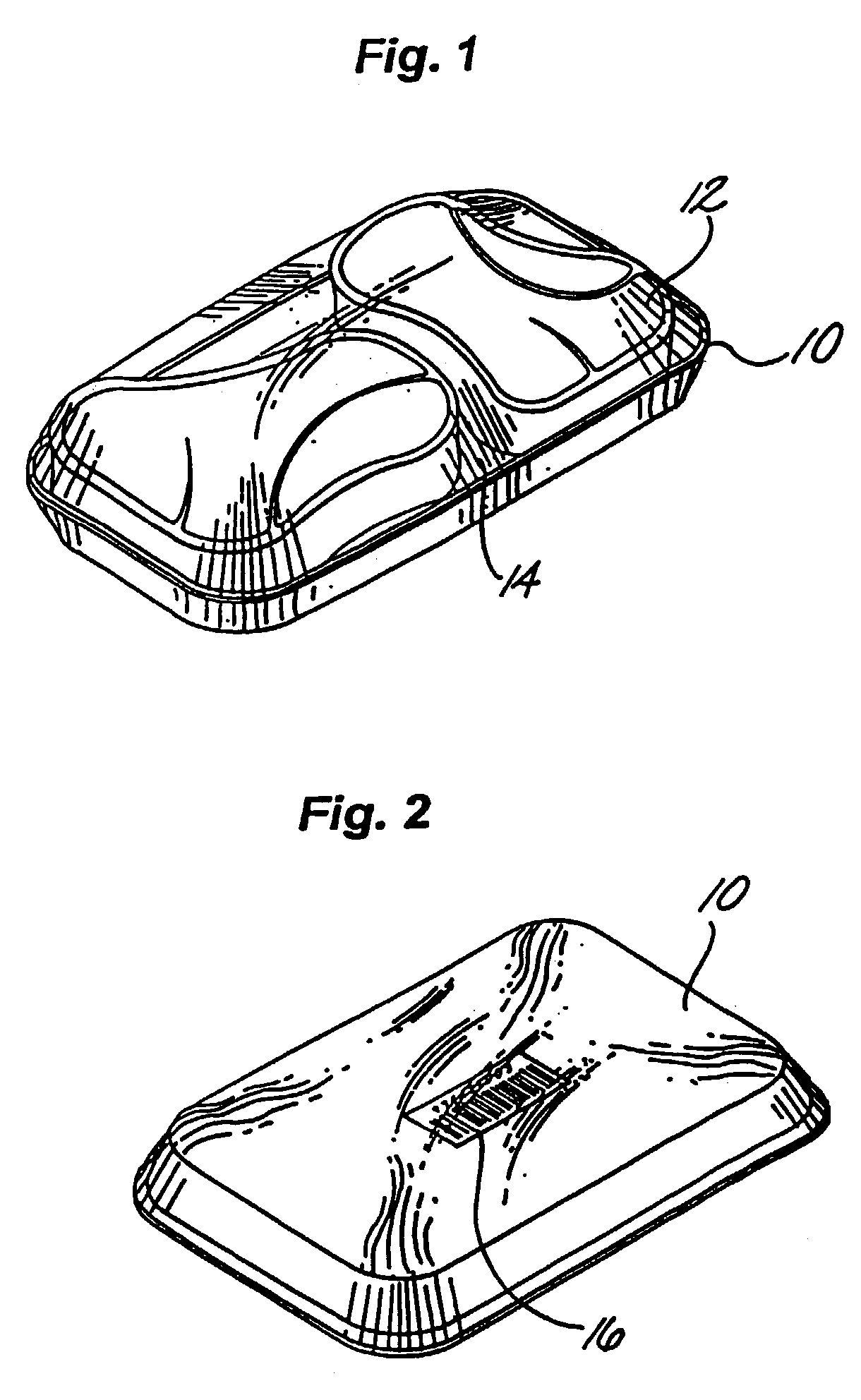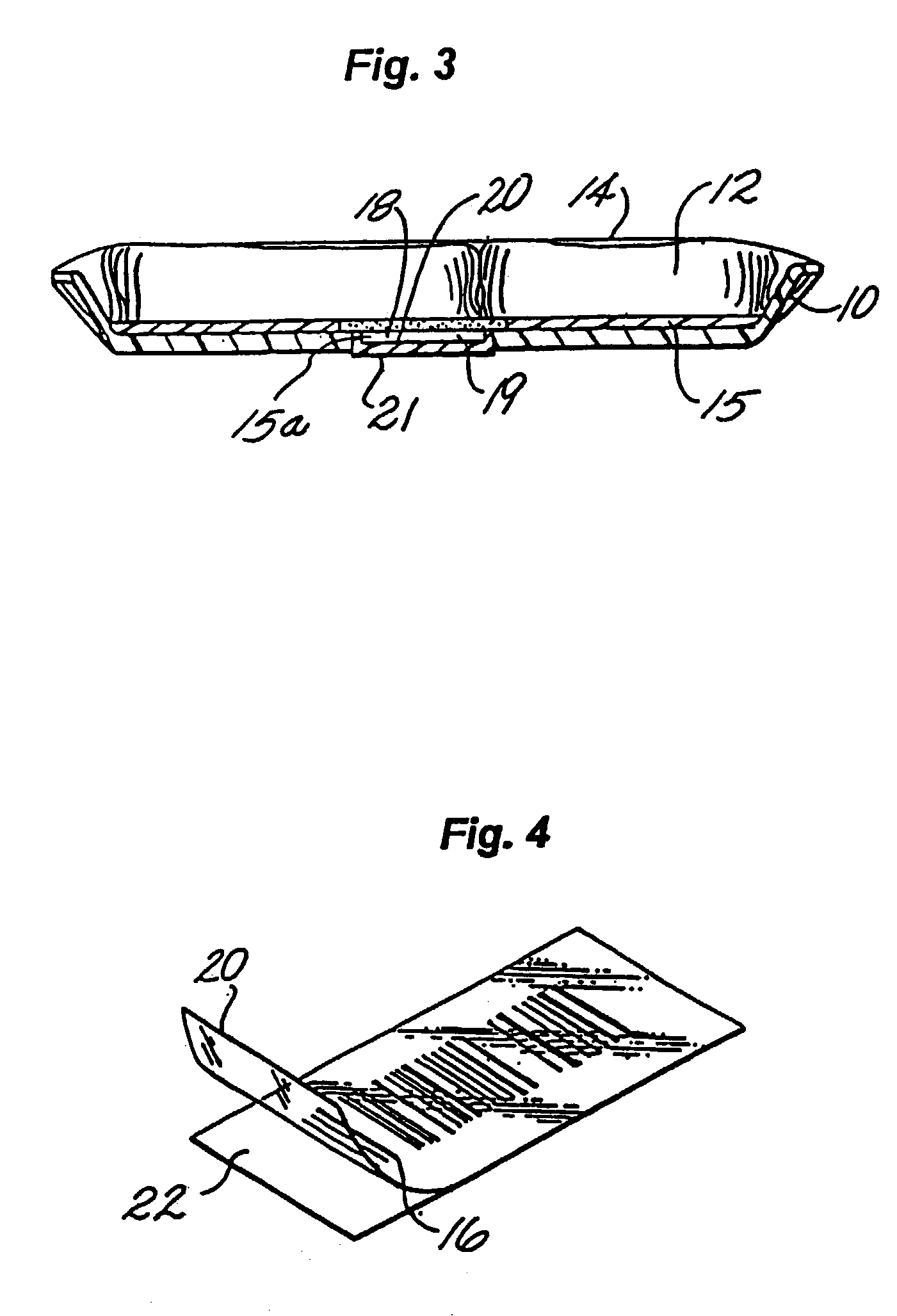Detection of contaminants
a technology of contaminants and detection methods, applied in the field of detection of contaminants, can solve the problems of contamination of food products, and contamination of raw meat, and achieve the effects of reducing the risk of contamination, and reducing the possibility of contamination
- Summary
- Abstract
- Description
- Claims
- Application Information
AI Technical Summary
Benefits of technology
Problems solved by technology
Method used
Image
Examples
Embodiment Construction
[0049]The present invention uses an indicator which may be in the form of words, symbols, a bar code, coded indicia, or part of a bar code or coded indicia that identifies a product at point of purchase, sale, or distribution as a detector system. The detector system disclosed herein is adapted for use as a food detection system for detecting conditions indicative of contamination that may be present in food products, including bacterial metabolites, toxins, and other secretions. The detector system disclosed herein may further be adapted for use as a contamination detector for detecting conditions indicative of contamination that may be present in containers and / or the products in the containers. The contamination detector may be attached to a surface or incorporated into a container or packaging for material. The term ‘container’ refers to a receptacle in which material is held or carried. One of the functions of a contamination detector is for use in detecting the presence of a c...
PUM
| Property | Measurement | Unit |
|---|---|---|
| time-temperature | aaaaa | aaaaa |
| temperature | aaaaa | aaaaa |
| temperatures | aaaaa | aaaaa |
Abstract
Description
Claims
Application Information
 Login to View More
Login to View More - R&D
- Intellectual Property
- Life Sciences
- Materials
- Tech Scout
- Unparalleled Data Quality
- Higher Quality Content
- 60% Fewer Hallucinations
Browse by: Latest US Patents, China's latest patents, Technical Efficacy Thesaurus, Application Domain, Technology Topic, Popular Technical Reports.
© 2025 PatSnap. All rights reserved.Legal|Privacy policy|Modern Slavery Act Transparency Statement|Sitemap|About US| Contact US: help@patsnap.com



